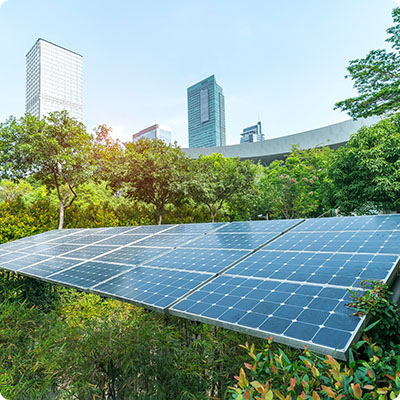The need for soft mobility
Rome gives the impression of being an airy city. The fact that there are hardly any skyscrapers contributes to this, as does the fact that the outskirts are not lined with buildings as in other European capitals, but offer pretty countryside landscapes. The city also introduced a congestion charge in 2001. Only vehicles with a season ticket can enter the city center. Entrance to the zone is indicated by signs bearing the words "Zona a Traffico Limitato". Controls are carried out by cameras that read license plates. However, air quality in the capital remains a problem, not only for the health of its inhabitants, but also for its historic buildings. Unfortunately, it's not always easy to do without a car in Rome! Public transport is not very efficient: buses, streetcars and subway trains are not very punctual and there are not enough of them. As for cycling, there are 320 kilometers of cycle paths, half of which are in parks, which is not very many for a city of this size. Between the cobblestones, the traffic and the relief of the city of seven hills, cycling is not necessarily recommended.
The problem of the garbage
Since the closure of Europe's largest landfill site, Malagrotta, in the southwest of the city, in 2013, waste management in Rome has been the subject of recurring problems. Bags of garbage regularly pile up in the city's outlying districts, uncollected because the recycling centers are saturated. The Lazio Region and the municipality pass the buck, and the situation stalls... There is, however, an original and inspiring initiative: " +Ricicli +Viaggi ", launched in summer 2019. At eight of the city's metro stations - Anagnina, Cipro, San Giovanni, Termini, Basilica San Paolo, Laurentina, Piramide and Malatesta - residents can drop off PET plastic bottles at an automatic kiosk. In exchange, they receive credits towards the purchase of metro tickets. It takes 30 bottles to buy a ticket.
A well present biodiversity
Despite its management difficulties, Rome offers a rich biodiversity, thanks to its climate and numerous green spaces. 1,000 plant species, 5,000 insect species and 150 vertebrates have been counted. Roma Natura, the organization in charge of managing the municipality's natural areas, looks after over 16,000 hectares of protected nature, including the Secche di Tor Paterno marine reserve. Between the must-see Villa Borghese museums, look up and admire the umbrella pines and century-old oaks, themselves witnesses to the passing of time. On the other side of the Tiber, below the Janiculum hill, the Trastevere Botanical Garden, with its palm trees, rose gardens and bamboo, will delight plant enthusiasts of all kinds. The city's largest park is Villa Doria Pamphilj, with 180 hectares of pinewoods, gardens and fields. We also love the Parc Savello, also known as the "Orange Garden", on the Aventine hill, which owes its name to its many fruit trees and offers a breathtaking view of the city.
Since the early 2010s, Rome has also seen the emergence of shared gardens and vegetable patches, tended by citizens. The Zappata Romana association, which promotes them and encourages exchanges between gardeners, lists over 150 on its website (www.zappataromana.net/mappa).
Rome, cat lover
The 186 hectares of archaeological zones are also refuges for flora and fauna. Perennial plants thrive in the interstices of the ruins. Numerous lizards scurry between the walls of yesteryear, most often ruin lizards, also known as Sicilian lizards. The other major inhabitants of the Roman remains are cats. They have been protected by decree since 2001, as part of the city's bio-cultural heritage. There are said to be over 300,000 cats in the city. They are fed and cared for by volunteer benefactors, known here as gattare. They are particularly fond of lounging on the warm walls of Largo di Torre Argentina and on the graves of the Protestant cemetery in the Testaccio district. For cat lovers, the Romeow Cat Bistrot (Piramide metro station) serves vegan pastries while you pet these cute little creatures.
A periphery to explore
To enjoy an even greener atmosphere, it is necessary to move away from the historic center. Less than an hour away by public transportation, the Appia Antica regional park is home to catacombs, temples and ancient remains in the middle of a true countryside landscape. Between the fields of wheat and the endless paths of olive trees, you are likely to come across a few cows and sheep.
Unlike other major European capitals, the outskirts of Rome have vast undeveloped areas that are well worth a visit. Twenty kilometers south of the city are the Castelli Romani, fifteen picturesque villages surrounded by forests, with two lakes, Lake Albano and Lake Nemi. Along the Tyrrhenian coast is the National Park of Circe, created in 1934. Circe is a promontory overlooking the sea at 534 meters above sea level. Dunes and sandy beaches alternate in this place protected by the European Union. To the north, Mount Soracte, 691 meters above sea level, is the highest mountain in the Tiber Valley. It is part of the nature reserve of the same name, which covers 410 hectares. Finally, the Regional Park of Veio is located between Via Flaminia and Via Cassia and was once inhabited by the Etruscans.











